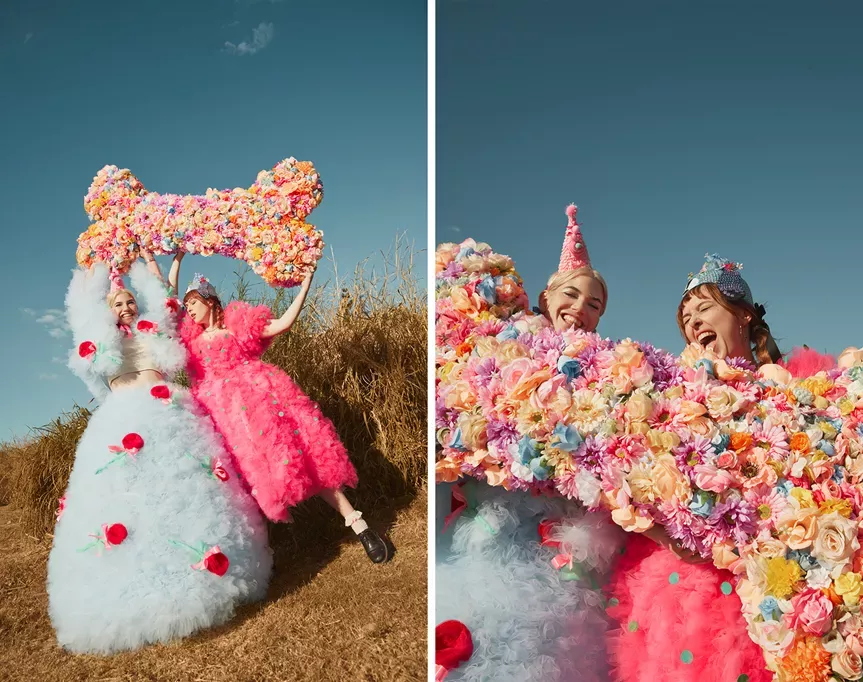frankie's guide to graphic novels
Heads up: graphic novels have so much less text in them, you can read a whole lot really quickly and people will think you’re clever.
I cannot draw. Ask me to whip up a quick sketch and you’ll get to see my ‘derp’ face. Essentially, drawing seems like magical hoodoo to me, so I’m generally pretty stoked on graphic novels, which are the beauteous product of an artist being able to draw AND write as well. Two creative skills = more than is fair, so I am convinced graphic novelists are all witches and I love their brand of magic. Also, graphic novels have so much less text in them, so you can read a whole lot of them really quickly and people will think you’re clever. Here are some of my faves.
Nimona by Noelle Stevenson features an actual magician: the titular Nimona is a punky li’l shapeshifter who shows up at renowned supervillain Ballister Blackheart’s front door uninvited. She wants to work with him! He doesn’t want to work with her! She turns into a shark and he can’t help but be impressed! Together they discover the dastardly plans of the X Institution and plot to expose them. Nimona is scarily badass and also perky – so, deadly. Plus she can turn into a cat (or a dragon, an elephant, a triceratops, or your brother). Basically, my hero.
Graphic novels’ illustration-and-script combo is a kind of illusion that can envelop you in a different place and time. One of my very favourites that does this is Persepolis, Parts 1 and 2 by Marjane Satrapi. In Part 1, Marjane is pretty much a girl like any other – begging her parents for Kim Wilde cassettes and denim jackets in the '80s – except that she is becoming a woman after the Islamic revolution. Persepolis is a complex, sometimes horrifying story about a country that changed so dramatically and quickly – a change that a grown-up Marjane contemplates in Part 2 as she departs for Vienna to start a new life.
I love New Yorker cartoonist Roz Chast’s work. Her cartoons are like Seinfeld in a drawing: neurotic and ultra-specific. Chast’s memoir about her parents, Can’t We Talk About Something More Pleasant?, is both drenched in her own fretful personality (she draws herself like a middle-aged, anxiety-ridden version of The Scream) and a relatable treatment of the universal experience of aging and death. Her overbearing mother (who, frankly, seems ultra-scary) and gentle father’s symbiotic relationship jumps off the page, making it feel like a true loss when they pass away from old age.
One of my favourite recent reads is Maggie Thrash’s Honor Girl. Maggie’s drawing style is simple and funny; it suits the wholesome vibe of Camp Bellflower, where 15-year-old Maggie spent one fateful summer. In an atmosphere where every single girl on the grounds will tease you if they find out you like someone, our hero is pretty keen to keep her crush on camp counsellor Erin a secret. Bittersweet separations, longing glances, interfering adults, and, um, Kevin Richardson (the most underrated Backstreet Boy, in my opinion) make this one a killer.
For more of a snarky coming-of-age vibe, try Jillian Tamaki’s Supermutant Magic Academy. Yes, everyone at this school has a superpower, but that doesn’t necessarily help when you’re an angsty teenage mutant! Like, having adorable cat ears doesn’t let you off the hook re: thinking about mortality and the end of the world.
Nikki Greenberg’s otherworldly retellings of Hamlet and The Great Gatsby are radical and will make you believe you’ve never truly encountered either literary classic before. Hamlet and Ophelia appear as inky black blots, while Gatsby is cast as a noble seahorse. Somehow the tableaus seem incredibly cute and deeply profound at the same time, and I need to find out how I can make myself appear that way too, thanks.
You probably know about Alison Bechdel thanks to her witty read of the film industry, enshrined forever as the Bechdel Test [http://bechdeltest.com/]. The graphic memoir she wrote about her controlling, closeted father, Fun Home, has recently been staged as a Broadway musical and is enjoying some well-deserved attention. But her memoir about another parent, Are You My Mother?, is my personal poison – it’s as plaintive as the SECRETLY VERY EXISTENTIAL children’s book of the same name, yet it’s complicated by particularly adult concerns, including romance, psychoanalysis, and secrecy. If you’re interested in piercing your own heart with a jagged spear, this is the book I recommend to thee.
Finally, one I’m including here because I just don’t think I’m ever going to write a guide to Weird Art Books That Are Half Jokes, Half Scribbles, and Half Made-Up Words (yes, three halves): David Shrigley’s Human Achievement is a mishmash of inglorious scratchings. On one page you might see a nonsensical graph; on another you might find a drawing of rude bits. Human Achievement is for those of you who want to look at a book and think, “Huh! I’ve never thought about it like that before.” And then immediately also think, “Thank goodness.”
Nothing like a phenomenological crisis, I always say! Which pretty much sums up the appeal of graphic novels for me: you just might never see things the same way again.
Lovely snap from Heidi Systo.


_(11)_(1).png&q=80&h=682&w=863&c=1&s=1)









.jpg&q=80&w=316&c=1&s=1)













.jpg&q=80&w=316&c=1&s=1)










